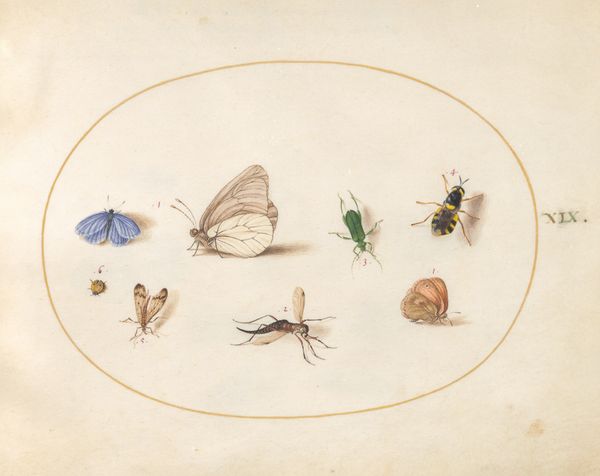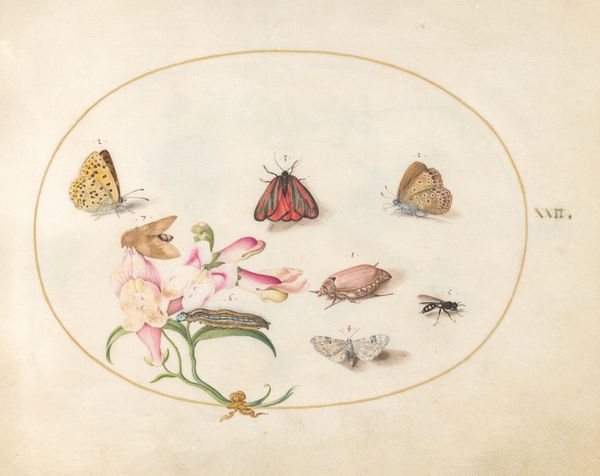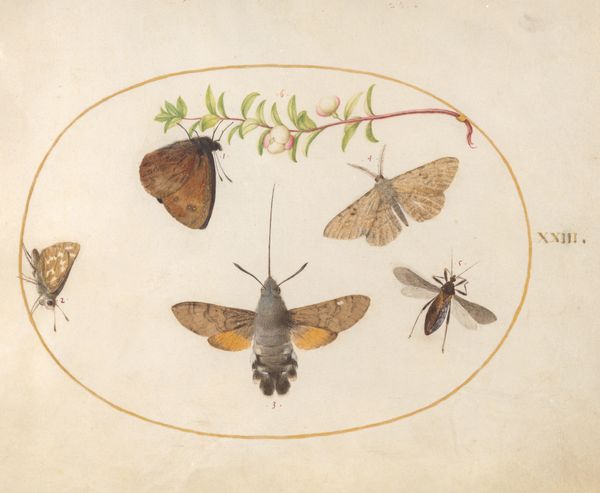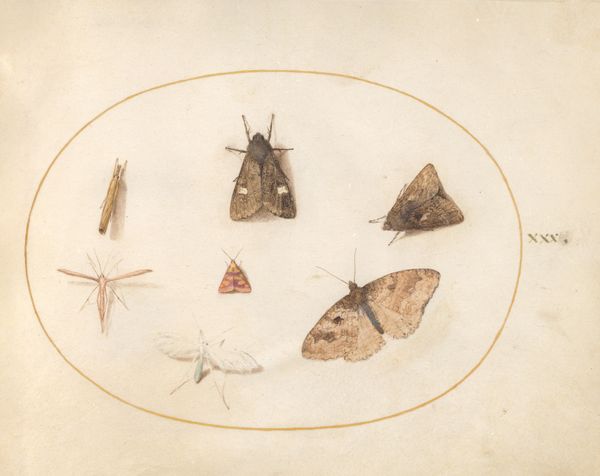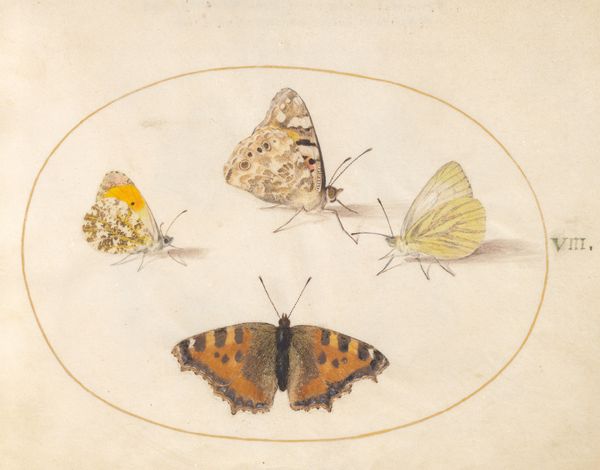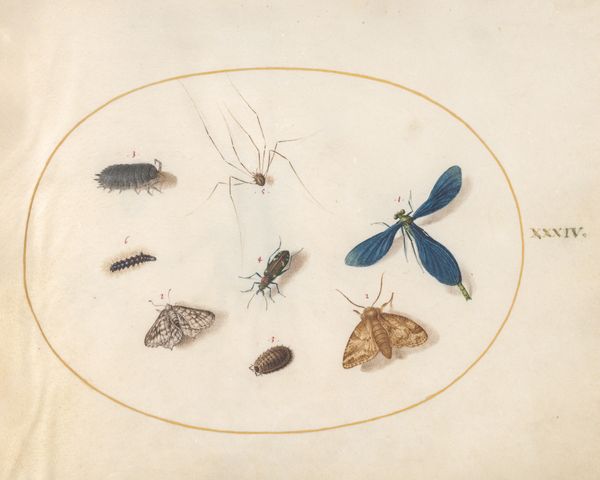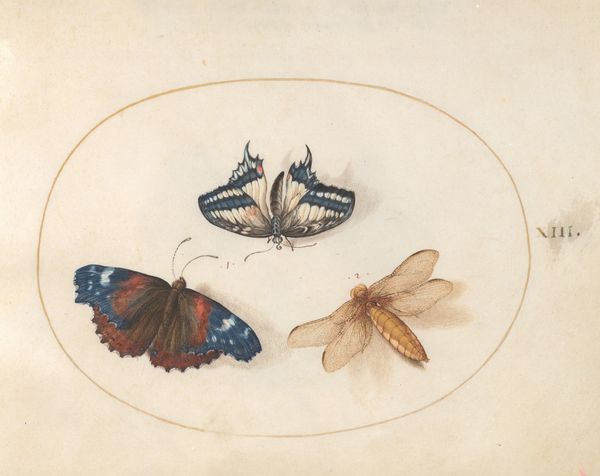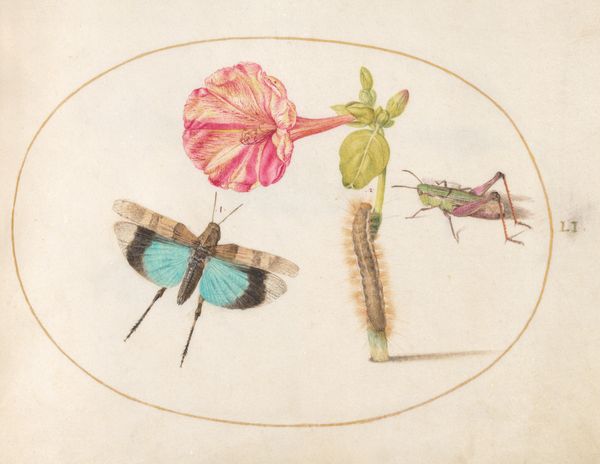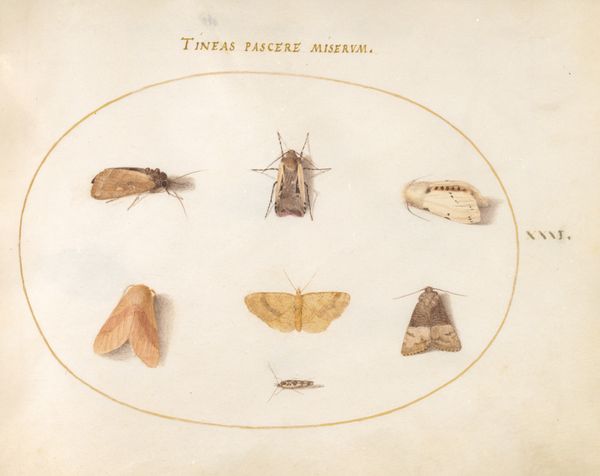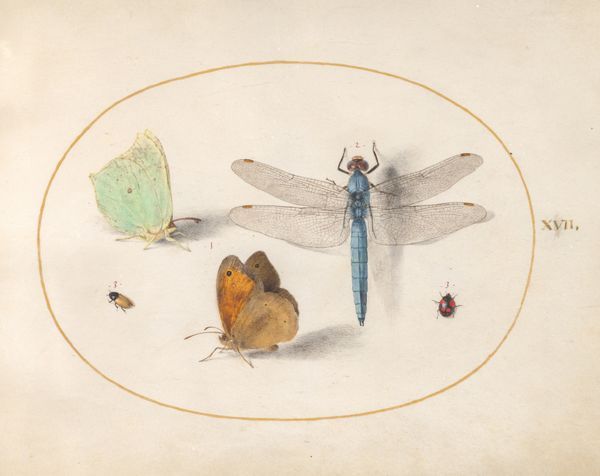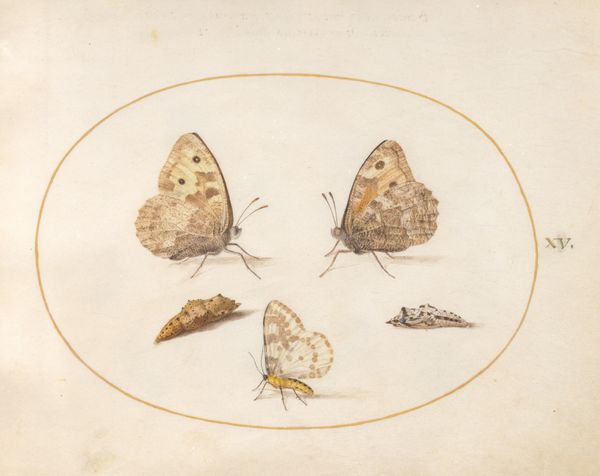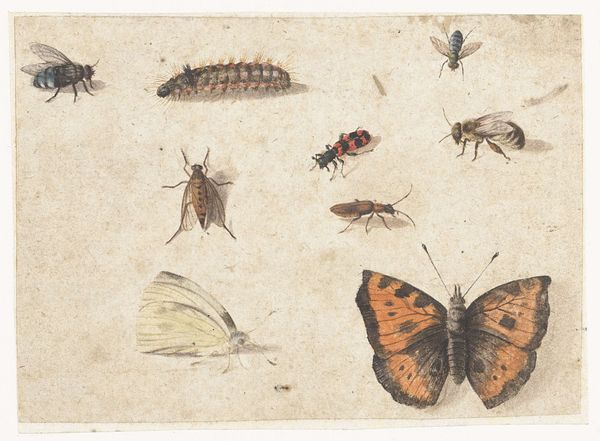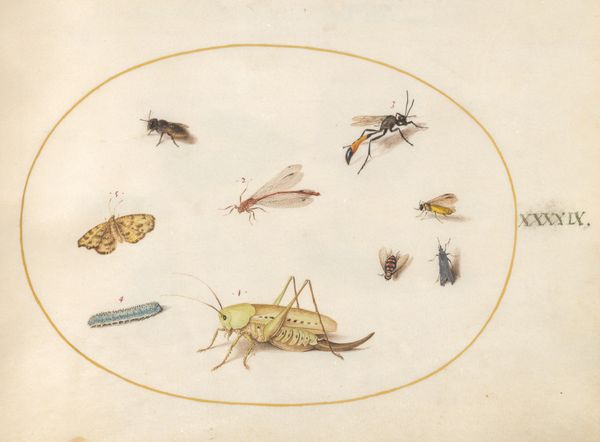
Plate 20: Three Butterflies, a Caterpillar, a Bee, Two Chrysalides, and Three Weevils c. 1575 - 1580
0:00
0:00
drawing, coloured-pencil
#
drawing
#
coloured-pencil
#
11_renaissance
#
coloured pencil
#
botanical drawing
#
northern-renaissance
Dimensions: page size (approximate): 14.3 x 18.4 cm (5 5/8 x 7 1/4 in.)
Copyright: National Gallery of Art: CC0 1.0
Editor: Here we have Joris Hoefnagel's "Plate 20: Three Butterflies, a Caterpillar, a Bee, Two Chrysalides, and Three Weevils," made with colored pencils around 1575-1580. The detail is amazing! It’s all contained in this perfect oval shape; it feels so controlled and organized. How do you interpret the composition and materiality? Curator: For me, the most striking aspect is Hoefnagel’s use of colored pencils. This elevates what might otherwise be seen as a scientific illustration to the realm of art. The deliberate crafting of the image, the labor involved in capturing each minute detail – it all speaks to a specific relationship with natural materials, right? Editor: Absolutely! It does seem he valued a tangible process. Curator: Think about where these materials would have come from: mined pigments, painstakingly crafted pencils, and the expensive paper. It signals a wealthy patron class supporting this meticulous work. We aren’t just looking at insects; we’re looking at systems of production and the consumption of luxury goods. Is there anything else that jumps out at you from a material standpoint? Editor: Well, the act of drawing itself seems… almost scientific, documenting natural life as part of its raw material. It feels deeply observational but also distanced from that source because of its medium. Curator: Precisely. And this "distance," as you say, becomes another layer of meaning. This sheet of paper transforms into an artifact, a marker of its era's material concerns, not solely just a mere reflection of Renaissance artistic skill or science! It's easy to miss because we see only the illustration! Editor: This completely changes my perception. Now I see it as part of that system, not outside it. Curator: Yes! It reveals an intriguing insight into how science, art and material culture intersect!
Comments
No comments
Be the first to comment and join the conversation on the ultimate creative platform.
